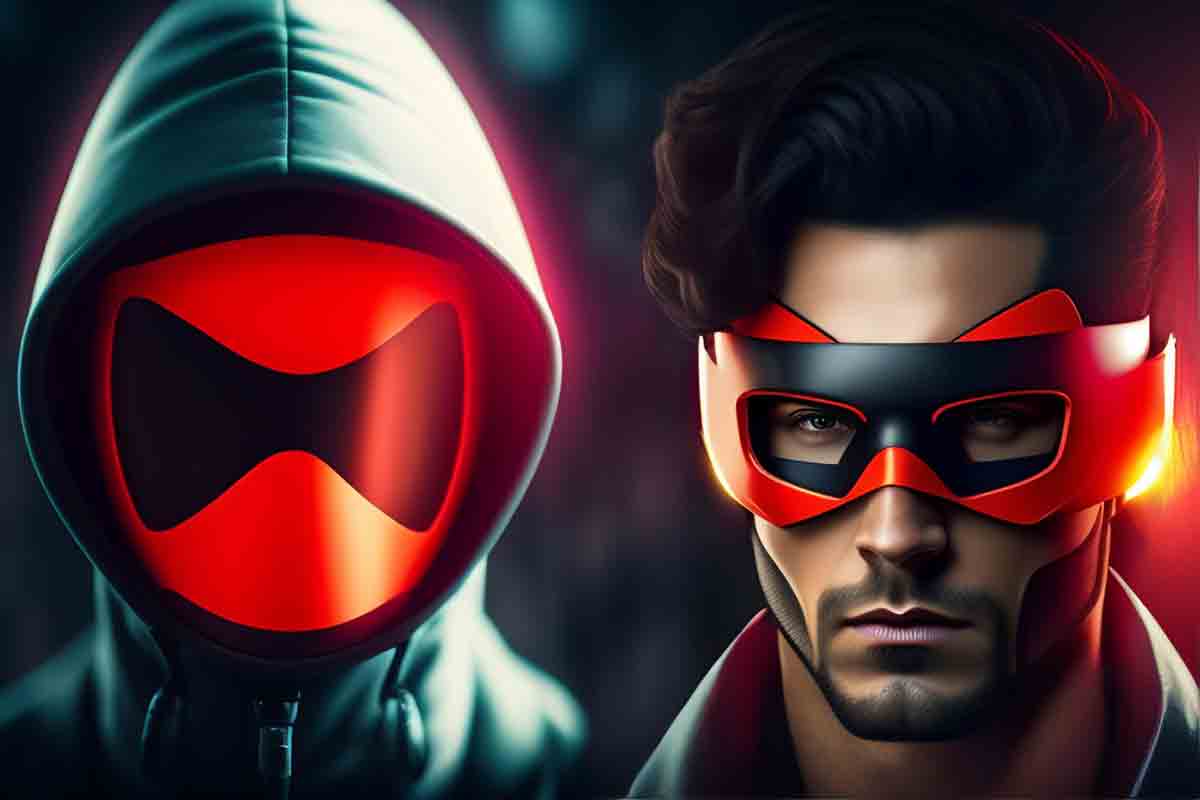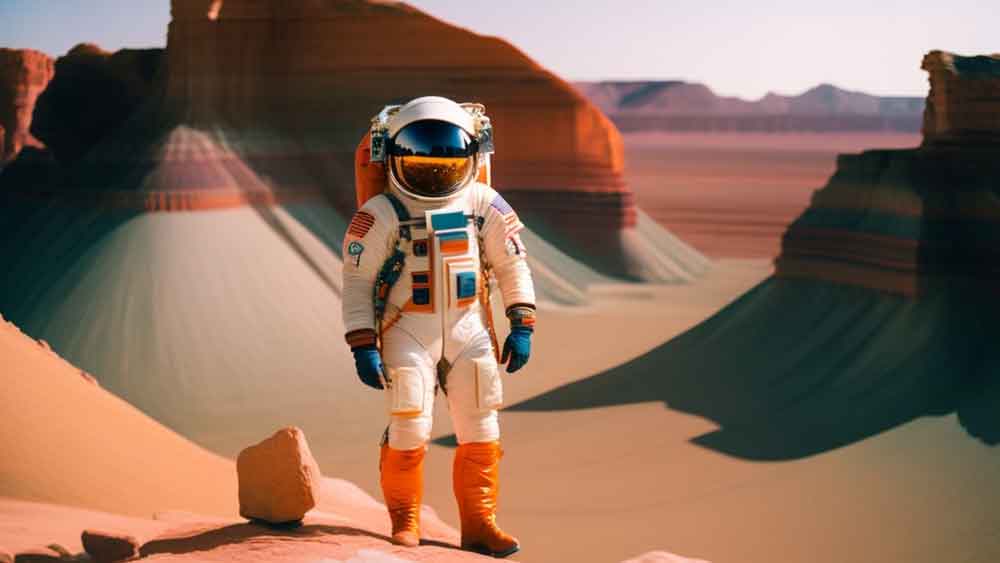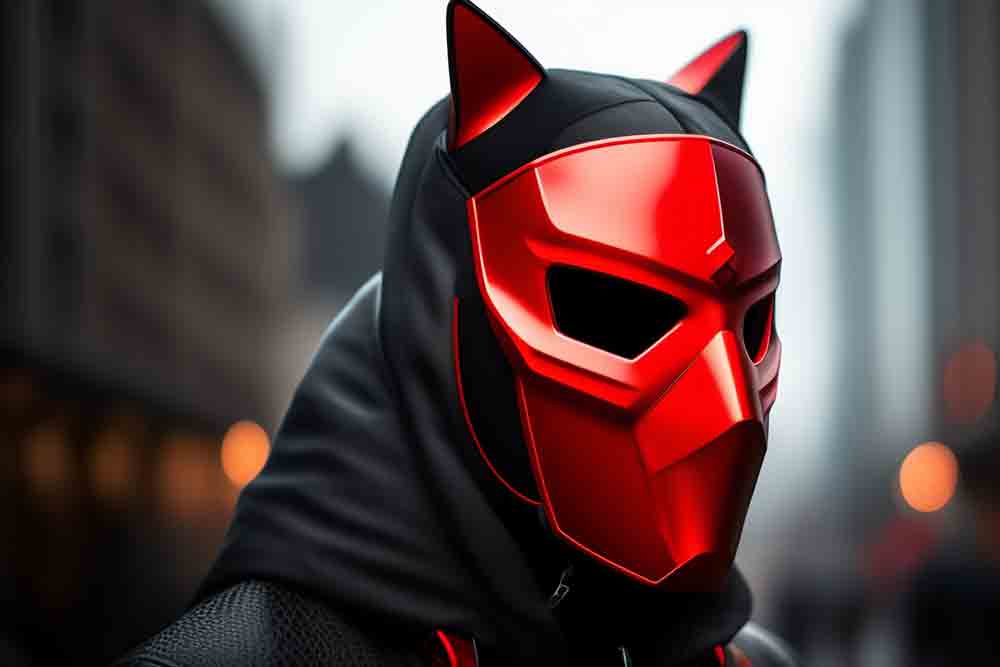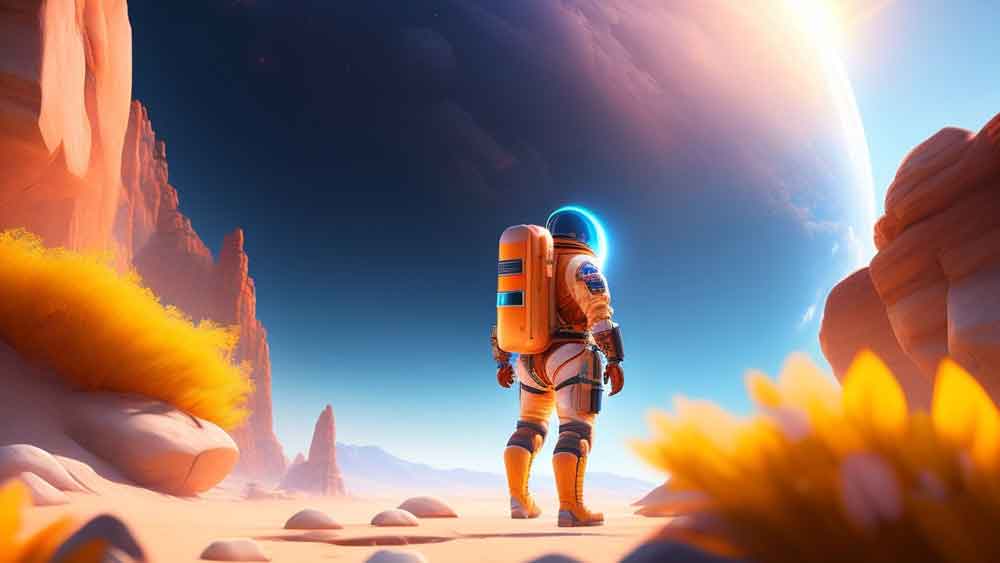AI art
Artists actively create artificial intelligence art using algorithms and techniques. They employ machine learning models to generate, modify, or manipulate digital media. Some AI art is solely machine-generated, while others result from human-AI collaboration. Artists actively utilize Artificial intelligence tools to create or enhance digital art in various forms. While commonly associated with visual art such as images and videos, AI art also extends to audio compositions, including music.

AI art authorizes individuals to create artworks or entire collections swiftly, surpassing the time-consuming nature of non-AI methods. Moreover, it enables the creation of visually or audibly intricate compositions that might be challenging to achieve otherwise. Text-to-image generative AI tools like Lexica, Midjourney, DALL-E 2, or Stable Diffusion eliminate the need for manual drawing. Users can input a text prompt into the tool, generating the desired imagery efficiently.
AI Art History
The history of AI Art is shaped by technological advancements. Innovative algorithms transformed artistic expression, enabling artists to create captivating and thought-provoking works. Early experiments paved the way for the development of art as pioneers explored machines’ potential to generate artistic content. Researchers and creators collaborated, pushing the boundaries of art and unleashing stunning visual compositions through the harnessing of AI algorithms. Artists embraced artificial intelligence as a powerful tool in their palette, receiving recognition and praise from the artistic community. This dynamic relationship between technology and creativity unfolded, defining the fascinating history of AI art.
Early experiments in AI-generated art
Visionaries conducted early experiments in AI-generated art, exploring machines’ creative potential. They pushed boundaries, collaborating with researchers to create captivating artworks. Artists harnessed AI algorithms, revolutionizing the art world with innovative creations. These pioneers embraced artificial intelligence as a powerful tool, inspiring future generations of creators. Their groundbreaking work shaped the landscape of AI-generated art, leaving an enduring impact on the artistic community.
AI art Techniques and Algorithms:
AI art techniques and algorithms have revolutionized the creative landscape. Artists employ these innovative tools to generate captivating and thought-provoking artworks. Advanced algorithms are harnessed to create stunning visual compositions and explore new artistic possibilities. The use of artificial intelligence as a creative medium empowers artists to push boundaries and experiment with unconventional approaches. These techniques and algorithms enable the fusion of human creativity with machine intelligence, resulting in unique and dynamic artistic expressions. The adoption of AI techniques has sparked a new wave of artistic exploration and opened doors to endless possibilities in the realm of creativity.

Generative Adversarial Networks (GANs) and their role in AI art
Generative Adversarial Networks (GANs) play a key role in AI art. GANs enable the generation of realistic and compelling artworks through the collaboration of two neural networks. The generator network produces images, while the discriminator network assesses their authenticity. This adversarial process drives the refinement and evolution of AI-generated art. GANs have revolutionized the art world by allowing artists to explore new creative territories and produce visually stunning and original pieces. The ability of GANs to learn from data and generate novel content has significantly contributed to the advancement and diversification of AI art.
How does AI art work
Machine learning algorithms and deep neural networks actively generate AI art. These algorithms are trained on large sets of existing artwork to learn patterns and styles for creating new art. The process involves selecting a dataset of artwork, training the algorithm on the images, and generating new art based on learned features and patterns. Additional techniques like style transfer and image filtering refine the generated artwork for aesthetic enhancement. The rise of AI prompts questions about its nature and whether it qualifies as art. DALL-E 2, developed by OpenAI, is an example of AI art generation.

Creating AI Art:
- Data collection and preprocessing – Creating AI art involves collecting and preprocessing data to fuel the creative process. Artists actively gather relevant data sources, ensuring a diverse and representative dataset. They preprocess the data by cleaning, organizing, and augmenting it to enhance its quality and usefulness. This step is crucial for training AI models accurately and generating meaningful artistic outputs. Through meticulous data collection and preprocessing, artists lay the foundation for producing compelling AI-generated artworks that reflect their artistic vision. This meticulous attention to data contributes to the overall success and authenticity of AI art creation.
- Training AI models for art generation – Artists actively train AI models to generate art through a rigorous process. They select appropriate training data and fine-tune models to learn artistic styles. By iteratively adjusting parameters, they optimize the models’ ability to generate desired outputs. Artists provide feedback and guide the training process to ensure artistic coherence and quality. Through meticulous training, AI models gain the capability to autonomously produce art that reflects the learned styles and creative expressions. This active involvement in training AI models empowers artists to push the boundaries of artistic creation and explore new possibilities in the realm of AI-generated art.
- Exploring different styles, themes, and mediums – Artists actively explore a variety of AI art styles, pushing the boundaries of creativity. They experiment with different approaches to create visually captivating artworks. By adapting and fine-tuning AI algorithms, they generate diverse and unique artistic expressions. Artists actively engage in the exploration of AI-generated styles, continuously expanding the possibilities of digital art. Through their active involvement, artists contribute to the evolution and advancement of AI art, shaping its ever-growing repertoire of styles.

Examples of AI art Image Prompts
a painting of a flowers on a gray background, an airbrush painting by Earnst Haeckel, trending on zbrush central, cloisonnism, high detail, detailed painting, biomorphic, digital art, realistic painting, dnd, character design, trending on artstation beautiful photo of sakura bonsai , hd ,very relaxing, surrealism, retro space, full body, volumetric light, cinematic lightning, cgi rendering, unreal, trending Artstation, ultra detailed beautiful photo of sakura bonsai , hd ,very relaxing, surrealism, retro space, full body, volumetric light, cinematic lightning, cgi rendering, unreal, trending Artstation, ultra detailed "cute creature holding a flower, natural lighting, volumetric lighting maximalist photo illustration 8k resolution concept art intricately detailed, complex, expansive, fantastical: Planets, cosmic space scenes lots of color sharp resolution, galaxies horizontal, haven, top portrait of a geometric dragon, identical eyes, illustration, full body made of red feathers, symmetrical, art stand, super detailed, cinematic lighting, gorgeous, by peter mohrbacher, warhammer fantasy, purple, cosmos
Impact of AI Art:
Artificial Intelligence art has made a profound impact on the artistic landscape. Artists actively utilize AI algorithms to create groundbreaking and thought-provoking artworks. This fusion of technology and creativity has expanded the boundaries of artistic expression. AI-generated art has captivated audiences, sparking discussions and redefining traditional notions of art. The impact of AI art extends beyond aesthetics, with its influence felt in various domains, including advertising, design, and interactive installations. By challenging existing norms, AI art has opened doors to new possibilities, inspiring artists and fostering innovation. Its continued development promises to shape the future of art, pushing the boundaries of imagination and creativity.
Future of AI Art:
The future of AI art holds immense potential for creative exploration. Artists will actively leverage AI algorithms to push artistic boundaries further. AI-generated art will continue to captivate audiences, fostering innovation and sparking interdisciplinary collaborations. As AI technologies evolve, new artistic styles and mediums will emerge, reshaping the artistic landscape. Artists will actively shape the future of AI art, adapting and refining algorithms to create compelling and thought-provoking artworks. This dynamic integration of technology and creativity will redefine the boundaries of artistic expression, opening doors to unprecedented artistic possibilities. The future of AI art is poised to revolutionize the art world, inspiring artists and captivating audiences with its limitless potential.
Conclusion
AI art expands the boundaries of creativity, enabling the creation of visually and audibly captivating compositions that may have been difficult or impossible to achieve using conventional techniques. With advancements in text-to-image generative AI tools, like Lexica, Midjourney, DALL-E 2, or Stable Diffusion, the process of generating art has become more accessible and efficient. However, debates continue regarding the nature and definition of AI art, challenging traditional notions of artistic creation. As AI technologies evolve, the future of AI art holds immense potential for further exploration, pushing the boundaries of imagination and redefining the creative landscape.
FAQs
How does AI art generate artwork?
AI algorithms analyze data and patterns to generate visually stunning and innovative compositions.
Are AI-generated artworks considered authentic?
The authenticity of AI-generated artworks is a subject of debate and interpretation. The perception of authenticity in AI-generated artworks varies among individuals and the art community.
Can I create AI art?
Yes, you can create AI art by utilizing various tools and techniques that enable the generation of artwork with the assistance of artificial intelligence.
